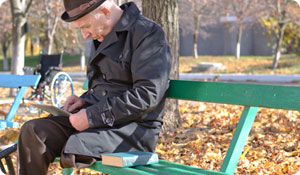
Prosthetic arms and legs for amputees have been around for thousands of years. But it's only recently that improving technology has led to prostheses that are not only more natural in look and feel than the wooden limbs of old but can be controlled in exciting new ways as well. Here, a bit of background on bionic limbs, and what the future has in store.
Building Bionic Limbs
The science behind prostheses is very personal. "We use all kinds of very high-strength-
to-low-weight ratio materials," says Eric Schwelke, CPO, LPO and director of prosthetic and orthotic services at Kessler Orthotic & Prosthetic Services in Livingston, NJ, which is affiliated with Kessler Institute of Rehabilitation. However, he says, "the component choices are driven by what the patient's potential functional levels will be."
Because no two bodies are exactly alike, the materials used to make prostheses (including their sockets) vary from patient to patient. They include:
- Titanium metals
- Carbon acrylic resins
- Kevlar
- Fiberglass
- Nylon
Far more than just filler for sleeves or pant legs, today's prosthetic devices can look amazingly realistic and do much more than prostheses of the past. Designed to help the patient return to as many activities as possible, they move like regular limbs, controlled by electrical switches, remote controls, or implanted microprocessors.
But, one of the most exciting advances in prosthetic technology is the ability to control the limb with his or her mind. A new procedure known as targeted muscle reinnervation allows doctors to "reassign" a patient's existing nerves to different muscle groupings, allowing additional myoelectric control for the increasing capabilities that new components offer. Researchers recently enabled thought-controlled movement in a prosthetic leg and hope to make this technology available to many leg amputees in the near future. According to Schwelke, research also is being done on technology that will allow patients to use thought to move several body parts all at once.
The Best Candidates for Bionic Limbs
Patients who receive prostheses typically work with a healthcare team, including doctors, psychologists, physical therapists, and orthotists, to help them adapt to their new limbs. And while the advances are unprecedented, experts caution that the new technologies are not for everyone. Older patients and those with coexisting health conditions may not be good candidates for newer procedures. But even those who don't benefit from so-called bionic limbs may still enjoy a full and independent life. "You'd be surprised how much amputees can do," Schwelke says. "Every day, something new is coming out."
Eric Schwelke, CPO, LPO, reviewed this article.
Sources:
"Targeted Muscle Re-innervation." Johns Hopkins Medicine. http://www.hopkinsmedicine.org/surgery/about/innovations/tmr.html, accessed September 29, 2013
Kim M. Norton, "A Brief History of Prosthetics," inMotion 17(7) 2007; Jack E. Uellendahl, CPO, "Prosthetic Primer: Materials Used in Prosthetics Part I," inMotion 8(5) 1998
"World's First Thought-Controlled Bionic Leg Unveiled by Rehabilitation Institute of Chicago," Rehabilitation Institute of Chicago, accessed September 29, 2013, http://www.ric.org/about/mediacenter/search-press-releases/2013/first-thought-controlled-bionic-leg/.





